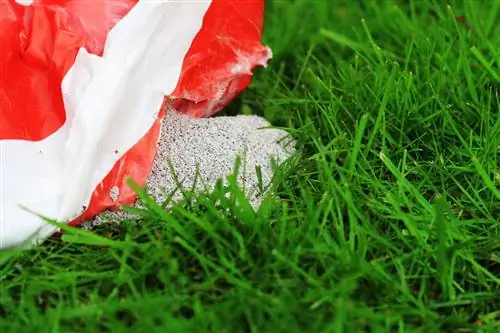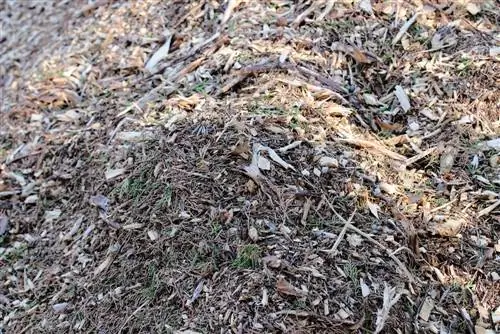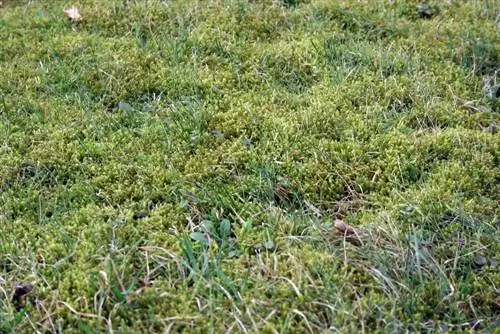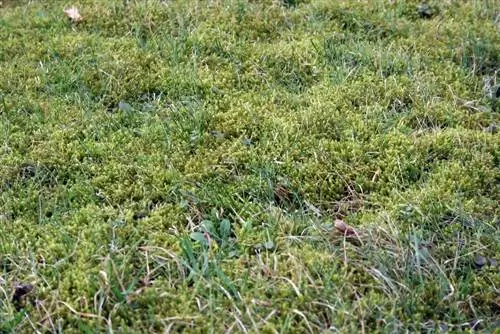- Author admin [email protected].
- Public 2023-12-17 03:39.
- Last modified 2025-01-24 12:45.
Year after year, the earth should diligently produce produce: crunchy vegetables, delicious strawberries, thick potato tubers and everything else the gardener grows. Or just plenty of green blades of grass for the perfect lawn. Without unwanted herbs such as dandelions, daisies etc. And without moss anyway. Is it easy and, above all, close to nature? Calcium cyanamide is said to be a long-proven magic remedy.
What is calcium cyanamide anyway?
Lime nitrogen has been produced industrially for more than 100 years. Our parents and grandparents have already used it for their vegetable gardens and lawns. It is still offered in stores today, often under the name “Perlka”. This name is derived from its grain size. While it used to be available primarily in powder form, it is now offered pressed as granules for safety reasons. In a chemical process, the calcium carbide produced from coal and limestone binds the abundant nitrogen in the air. Lime nitrogen consists of about half lime, a fifth calcium cyanamide (CaCN2) and some nitrate.
How do its active ingredients reach the plants?
The nitrogen in calcium cyanamide is not initially immediately available to the plants. Only in the soil is this compound converted into substances available to plants by microorganisms interacting with water. This happens gradually and takes some time. In the first step, slaked lime and the toxic and water-soluble substance cyanamide are created. It is precisely this cyanamide that has a herbicidal effect, which is why calcium cyanamide is particularly popular with hobby gardeners. In about two weeks later, the microorganisms have converted the toxic cyanamide into completely harmless urea and ultimately nitrate. Nitrate can be absorbed by plants through their roots along with water and used as a nutrient. No toxic residues remain in the soil.
What is calcium cyanamide good for in the garden?
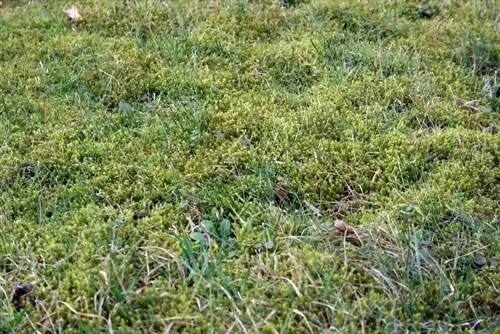
Thanks to its components, lime nitrogen can have a variety of effects in the garden, on beds or on the lawn:
- as a long-term fertilizer for nitrogen, it brings fast growth
- as a fungicide against various fungal diseases
- as a herbicide against weeds and moss
- as an insecticide against numerous pests and against snails
- for lime supply
- as a compost accelerator for quick and thorough rotting
- as a soil improver through lime enrichment
- as a companion to green manures after harvest
Limetic nitrogen as fertilizer
This mineral fertilizer supplies the soil with nitrogen and lime. Nitrogen is a nutrient that stimulates growth and ensures a good yield on a regular and reliable basis. The lime, on the other hand, counteracts the acidification of the soil and at the same time improves the soil structure. Microorganisms do not like acidic soil, but are essential as inhabitants of the garden beds. It is they who, through their conversion processes, ensure a fine, crumbly, loose and nutrient-rich soil.
Long-term effects of calcium cyanamide
After applying lime nitrogen, the nitrate portion is immediately available to the plants. The microorganisms need time to completely process the remaining calcium cyanamide for the plants, from cyanamide to ammonium and that in turn to nitrate. As long as the ammonium has not yet been converted into nitrate, it remains in the soil. It is hardly affected by leaching. The long conversion time is not a disadvantage, but rather it is ideal for the plants. You don't need the nutrients all at once, but rather evenly distributed over the entire growing season.
So that the long-term effect of calcium cyanamide lasts even longer, dicyandiamide (DCD) is added to the calcium cyanamide. DCD is created as a byproduct in the production of cyanamide and is known as a so-called nitrification inhibitor. It slows down the conversion process of ammonium into nitrate and thus contributes to the long-term effect of calcium cyanamide. The speed of degradation is also influenced by the temperature and soil moisture.
Lawn care and moss control
The lawn can also be fertilized with lime nitrogen. It strengthens the turf and thus leads to denser lawn. Another positive effect is the destruction of unwanted moss. This displaces the grass and continues to spread if nothing is done about it. He especially loves it when the lawn is shady and often moist. However, applying calcium cyanamide to lawns is a bit tricky and therefore requires horticultural experience, otherwise the desired effect will not be achieved. On the contrary, the lawn noticeably suffers from incorrect care.
- be sure to adhere to the recommended dosage
- Distribute granules evenly over the entire surface
- the grass must not be too wet during application
- Do not use lime nitrogen on freshly sown lawns
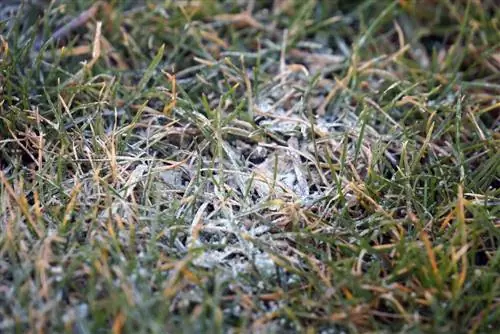
If you love your lawn, you better stick to these rules, otherwise the lawn owner will quickly risk a burnt lawn due to overdosing. If the stalks are too wet, many nitrogen grains stick to them and also lead to unwanted burns. And young grass plants are still too sensitive to calcium cyanamide. The lawn will recover from the burns, but it won't be nice to look at for a few weeks.
How does calcium cyanamide work against snails?
In some years, slugs are a huge pest in many gardens. Mild weather, hardly any natural enemies and frequent watering promote their spread. You can see them crawling around everywhere and devouring the leaves of plants in no time. They are so voracious that often only the root remains of a head of lettuce. Countless control methods are then used, but not all of them are promising or they develop their effect far too slowly. More and more snails hatch from abundant eggs.
Limetic nitrogen has a double effect, against crawling snails and their eggs. This means that no more snails can hatch.
- 30 grams of calcium cyanamide per square meter is enough
- Treat common “snail places” with particular care
- such as compost heaps, bushes and hedges
- repeat the application after a few weeks
Wireworms and tipula larvae can also be controlled in this way.
Limetic nitrogen against fungal diseases
Cabbage hernia is an extremely stubborn fungal disease that primarily affects cabbage plants. Unfortunately, it can hardly be combated effectively. Calcium cyanamide works against this by combating the fungal spores in the soil. They are prevented from germinating and the infestation is quickly contained. Apple scab spores are also successfully combated in this way.
Limetic nitrogen against weeds
The herbicidal effect of calcium cyanamide develops right from the start of application. The first substance created during the conversion is the toxic cyanamide. It sinks a few centimeters into the ground and destroys all shallow-rooted plants. These are mostly unwanted herbs. The garden remains free of weeds, making the annoying and strenuous weeding almost unnecessary. Other plants are no longer displaced or prevented from growing.
What calcium cyanamide is doing in compost
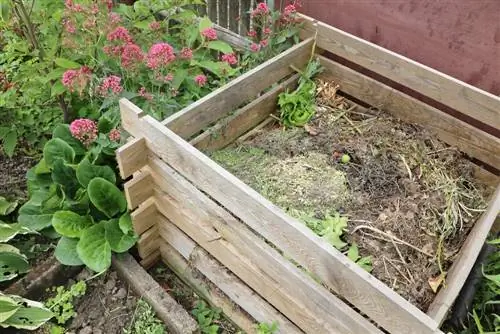
A compost heap is practical. Any greens that don’t end up on the plate end up in the compost heap. In return, after a while it gives us back the finest, nutrient-rich soil. Unfortunately, the rotting can last for a whole year or even longer. If, on the other hand, calcium cyanamide is repeatedly sprinkled over the garden waste, this process accelerates enormously. The high lime content and the special form of nitrogen promote rotting bacteria. The compost that has been heated to a greater extent is no longer suitable as a breeding ground for snails, maggots, pathogens and weed seeds. As a result, the garden waste is converted into humus without flies and the accompanying smell.
When is the optimal time for calcium cyanamide?
The granules can be scattered and incorporated into the garden during the warm season from March to September.
- in good time before sowing or planting
- in spring two weeks before sowing
- in summer one week is enough
- sprinkle in the morning or evening
- keep the soil moist
- do not enter the bed during this time
- Keep pets away
- The toxic period is only over after 1-2 weeks
- Wait a few days longer before sowing in cold weather
- Use also after culture for “soil cleaning”
- suitable for topping up the nitrogen supply
- do not use during plant growth
- then especially not by inexperienced gardeners
Note:
Moist soil is ideal for spreading lime nitrogen. However, it must not be sprinkled on damp plants. There is a risk that the sensitive leaves will burn.
The right dosage
The correct dosage must be based on the needs of the crops being grown. Highly consuming plants need the most, around 30 to 90 grams of lime nitrogen per square meter of cultivation area. Cucumbers and potatoes around 30 to 50 grams. Existing lawns are well supplied with around 20 grams per square meter. Around 150 grams of lime nitrogen are scattered into a compost facility measuring approximately one square meter. After the new compost layer has reached a height of 30 cm, lime nitrogen can be added again. These values are only guidelines. Be sure to pay attention to the information on the sales packaging. If the dosage amount is not clear, it is better to ask a specialist retailer.
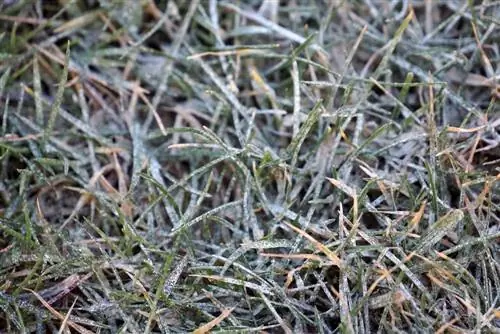
The lime nitrogen should be spread as evenly as possible. Throw your wrist upwards to all sides. This allows the granules to fly apart better and disperse evenly.
Note:
First place the potatoes in the soil, then fertilize with calcium cyanamide. If you don't have a measuring cup: 20 grams of calcium cyanamide is roughly equivalent to a heaped tablespoon.
Attention: Observe precautionary measures
Lime nitrogen is no longer offered as a fine powder, which can spread in the air and be easily inhaled, but it is not entirely safe to use. If used negligently and incorrectly, the toxic cyanamide in particular poses a danger to people and pets. If this substance comes into contact with moist skin or mucous membranes, it is harmful to he alth and causes chemical burns.
- wear rubber or latex gloves when spreading
- may never come into your eyes
- Keep children and pets away
- Lime nitrogen should be kept out of reach and according to regulations
- Always read and follow the package instructions before use
Limetic nitrogen and potted plants
If you do good things for your garden plants with calcium cyanamide, you might also come up with the idea of using it to make your potted plants happy. Although this idea is obvious, it is not recommended. In such a small space, it can quickly happen that the roots absorb too much cyanamide before it can be converted further. The result is yellowed and dried leaves.


